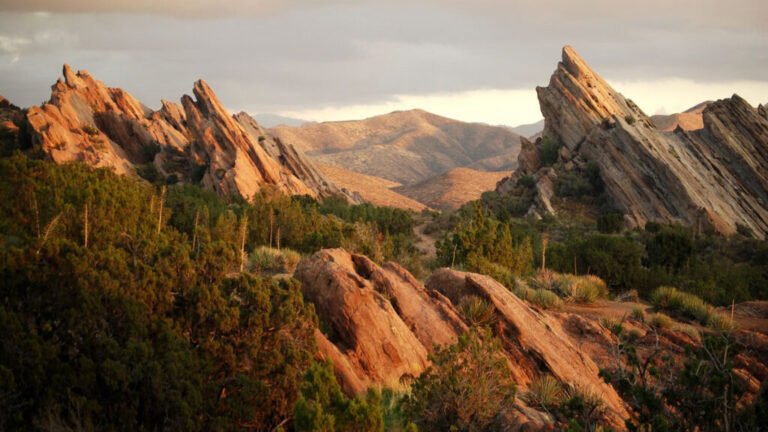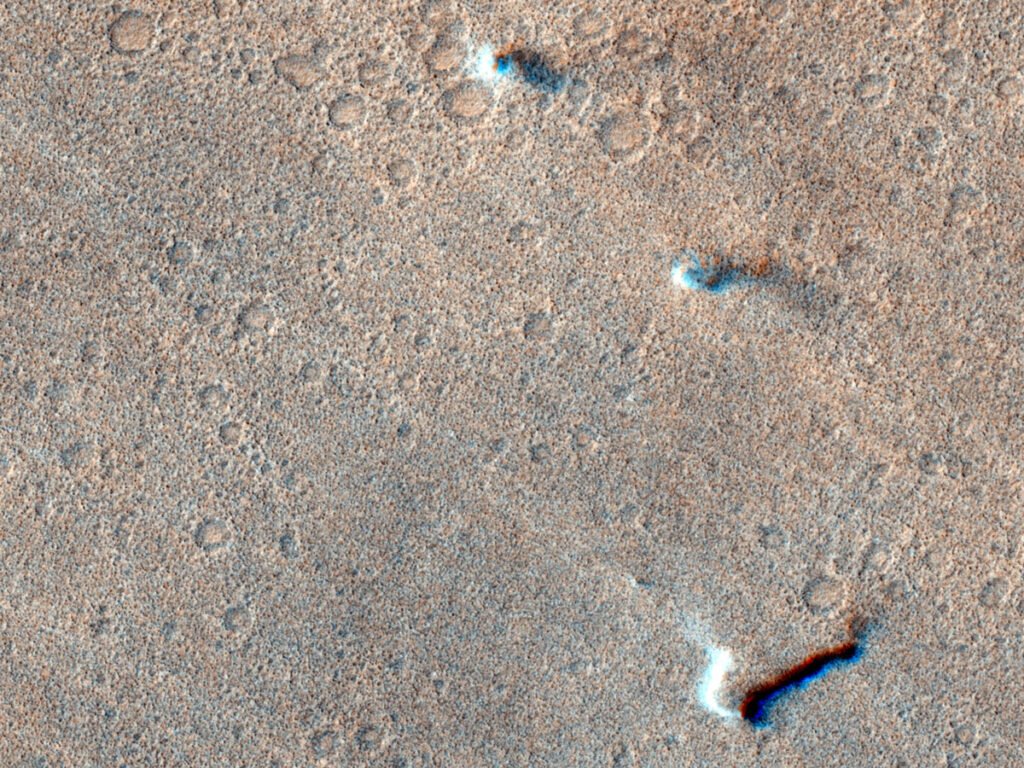
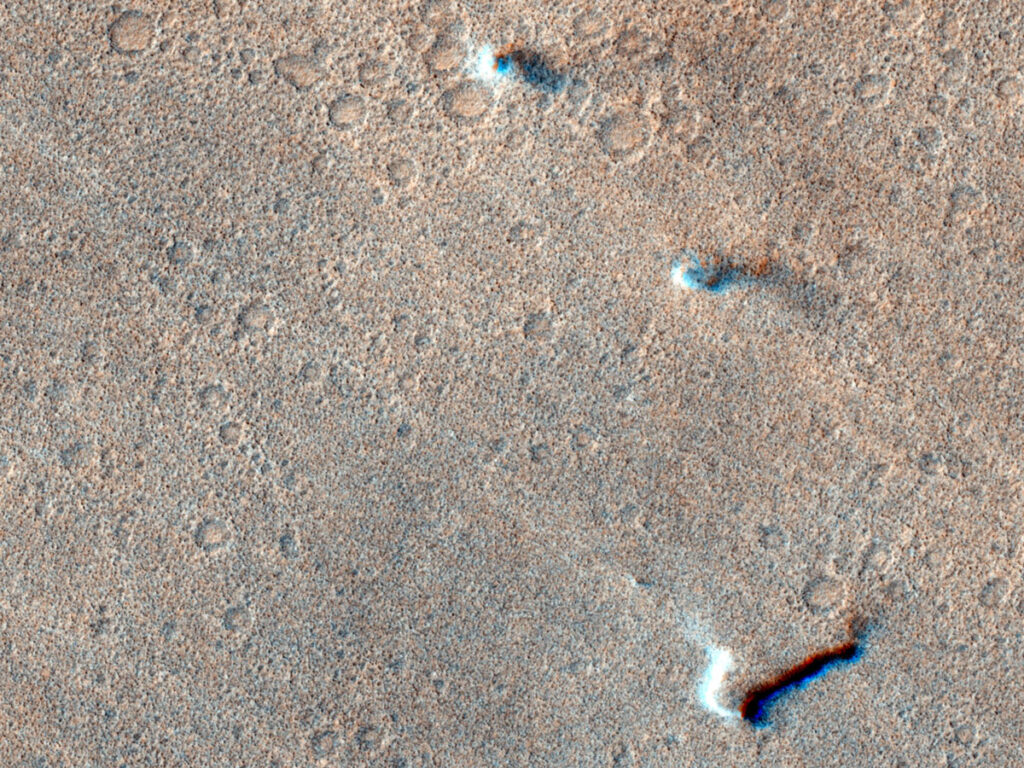
In 2020, the scientists and engineers behind NASA’s InSight lander were optimistic. The mission was performing spectacularly, and it had no end in sight. Then, its power began to fade. Fine Martian dust was relentlessly piling on top of its solar panels, blocking sunlight. Mission operators had anticipated this but hoped that occasional wind gusts or passing dust devils would sweep the panels clean. Such fortuitous cleaning had prolonged the lives of earlier robotic explorers, such as the Spirit and Opportunity rovers. But for InSight, no such wind ever came, and its batteries slowly ran out of juice. InSight fell silent in December 2022.
InSight’s demise illustrates a long-standing gap in Martian science: Researchers still know little about how winds move across the planet’s surface and interact with dust. To help fill this gap, a group of researchers has now reviewed decades of orbital imagery from two European Space Agency (ESA) spacecraft—Mars Express and the ExoMars Trace Gas Orbiter, operational since 2004 and 2016, respectively—looking for dust devils and using them as a proxy for surface winds.
Over the years, these orbiters have captured thousands of high-resolution images of Mars’s surface. Hidden within this vast dataset are countless sightings of dust devils, which drift with the prevailing winds. Because surface winds are otherwise impossible to measure directly from Martian orbit with the available instruments, tracking the motion of these vortices provides a rare window into their direction and velocity.
To measure these parameters, the researchers exploited a technical quirk of the spacecraft cameras, namely, the slight temporal delay between capturing different color layers of an image or between the right and left images in stereoscopic views. By tracking the dust devils’ movement between exposures, the team could track the velocity and directions of the winds carrying them. Their observations revealed some of the fastest surface wind speeds ever detected on Mars, challenging existing atmospheric models.
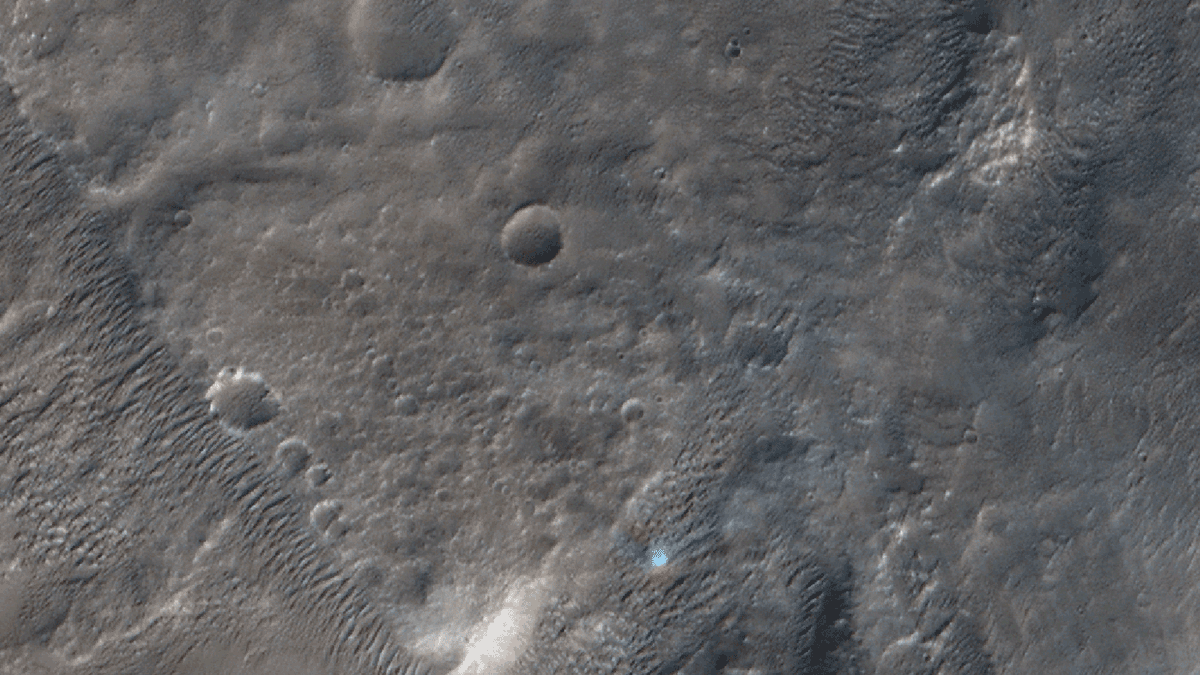
“With dust devils, we now have a tool to measure wind velocities across the planet, across space and time,” said Valentin Bickel, a planetary scientist at the University of Bern and lead author of the study. “We get a measurement of wind speeds in a distributed way around the planet, not just in specific lander locations.”
AI-Assisted Research
Detecting dust devils in orbital images, however, is not easy. For instance, the Colour and Stereo Surface Imaging System (CaSSIS) camera on board the ExoMars Trace Gas Orbiter resolves the surface at about 4 meters per pixel, meaning that dust devils dozens of meters wide appear as tiny smudges. Finding all these dust devils in the images is something that “an army of people could do in a few months or years, but nobody can pay for that,” Bickel said.
To automate the search, Bickel and colleagues trained a convolutional neural network—a type of artificial intelligence (AI) commonly used in image recognition—to identify the dust devils. After training the algorithm with about 50 examples labeled by experts, they let it loose on their full dataset of 50,000 orbital images. “Its only function is to identify dust levels in images; it can’t do anything else. It’s very stupid,” Bickel said. However, it needed only a few hours to scan the entire collection.
“The velocities we measured are totally surprising; I didn’t think we would see so many fast dust devils on Mars.”
The neural network detected more than a thousand dust devils across nearly all Martian latitudes. Each detection offered a new data point on local surface winds. The analysis revealed that Martian surface winds are generally faster than current atmospheric models suggest—and occasionally stronger than any speeds directly recorded by landers or rovers equipped with weather instruments. For instance, the researchers detected wind speeds of up to 44 meters per second, which is substantially faster than the previous 32 meters per second mark recorded by the Perseverance rover. Scientists previously assumed that dust devils might not even have been able to form at such wind speeds, as they could be destroyed by currents, Bickel said.
“The velocities we measured are totally surprising; I didn’t think we would see so many fast dust devils on Mars,” Bickel said. “You always picture them as these slowly moving clouds of dust, but it turns out they’re like superfast, highway speed level objects. I think it’s just crazy.”
The second key finding is that fast winds are more widespread across the planet than previously thought. To showcase this, the researchers produced a map with the locations of all 1,039 dust devils detected, including the direction of motion for 373 of them, confirming that dust devils are found all over Mars, even atop the tallest volcanoes. However, dust devils tend to cluster in specific regions, for instance, in Amazonis Planitia (visible at upper left in the map), a vast area known to be covered by an extensive, fine layer of dust and sand.
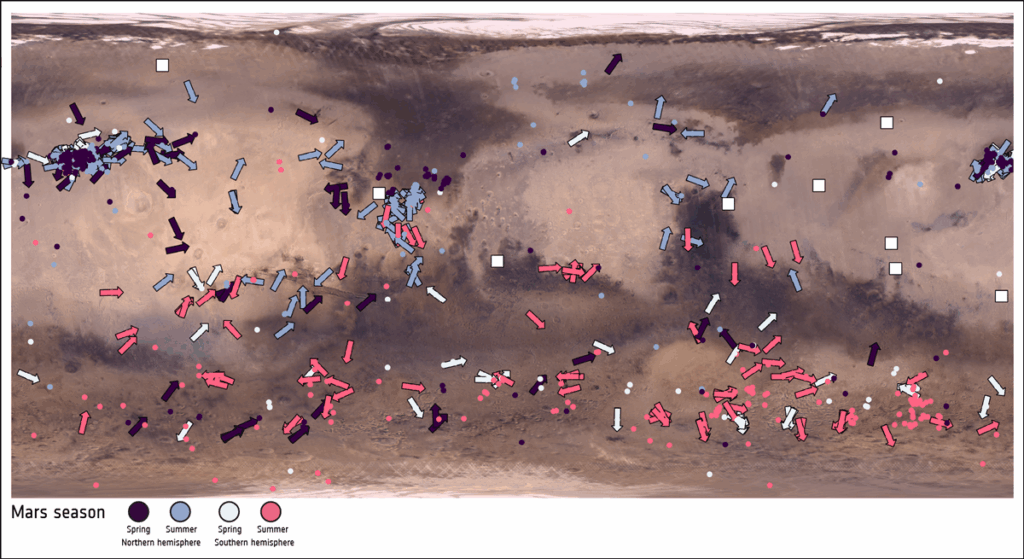
“Of course,” Bickel noted, “we have a bias because we need dust devils to see [the winds], so if there’s no dust at ground level, we don’t see the wind.”
The team also observed a clear seasonal pattern: Dust devils and strong winds appear more frequently during each hemisphere’s spring and summer, typically happening around midday, when surface heating is more intense. The researchers published their findings in Science Advances.
Blowing in the Dusty Wind
Deciphering how Martian winds work is key to understanding how dust shapes the planet’s weather and climate. Wind is the main force that lifts and transports the Red Planet’s abundant dust, which in turn regulates how the Martian atmosphere absorbs and radiates heat.
Understanding dust transport is thus critical for future exploration, both robotic and human. A global map of wind patterns might have helped InSight’s engineers choose a landing site less prone to rapid dust accumulation. On a larger scale, planet-encircling dust storms that erupt every decade or so—sometimes blocking sunlight for months—remain a serious hazard for exploration.
“Wind is one of the holy grails for human exploration and to understand the Martian climate.”
“Wind is one of the holy grails for human exploration and to understand the Martian climate,” said Germán Martínez, a researcher at the Center for Astrobiology in Madrid, Spain, who wasn’t involved with the new study. “Surface winds are very important, for Martian climatology, but especially at this time for human exploration safety, and we know very little.” In that sense, Martínez said, this research is important because it provides a map of surface wind speeds and directions that we didn’t have before, even if it’s a bit coarse.
Bickel agreed that more data, and more tools in orbit, will improve understanding of the Martian wind system. In the meantime, he hopes the new map will be used to validate and improve climate and wind models of Mars.
—Javier Barbuzano (@javibar.bsky.social), Science Writer
Citation: Barbuzano, J. (2025), Martian dust devils reveal dynamic surface winds, Eos, 106, https://doi.org/10.1029/2025EO250404. Published on 28 October 2025.
Text © 2025. The authors. CC BY-NC-ND 3.0
Except where otherwise noted, images are subject to copyright. Any reuse without express permission from the copyright owner is prohibited.
